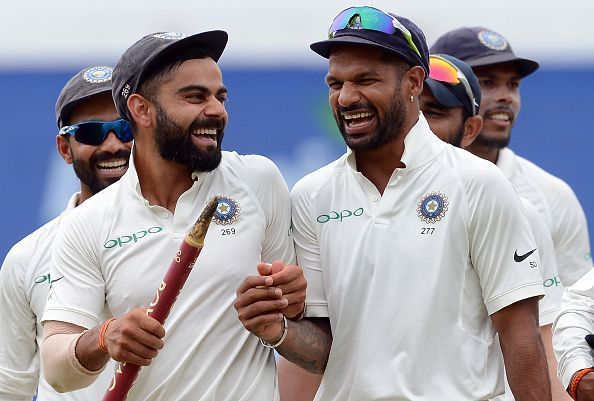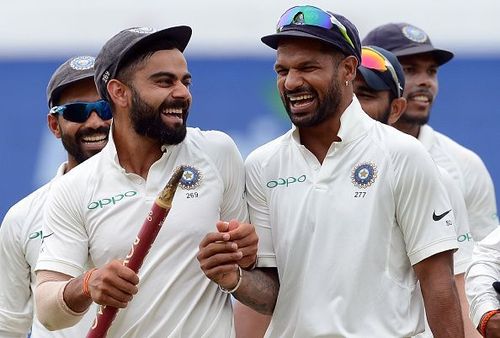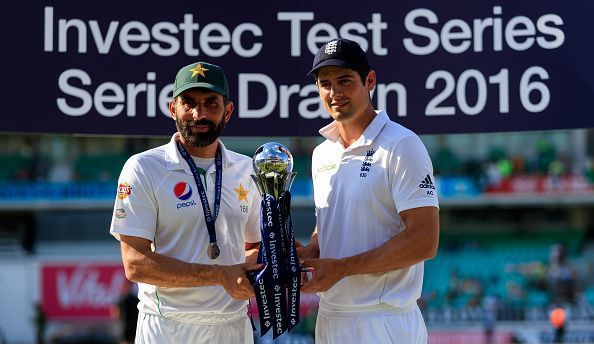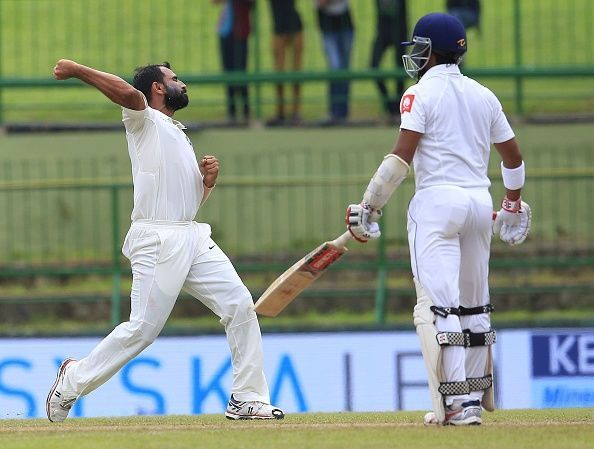
Why Test Cricket did not need a series like India vs Sri Lanka

Have you ever wondered why the longest format of the game was called 'Test Cricket"?
It could have been called anything. But no, true to its nature, it got the name, many, many years ago.
Often, terms like revenge make their way into conversations, especially when it comes to traditional rivalries.
Test cricket is war, but not the one where blood is shed, but one which helps the common man differentiate between who's got it and who hasn't, one which helps separate the men from the boys.
It makes cricketers think and elevate their games to the next level.
The England-Pakistan series last year was an excellent example of how the format can bring the best out of teams, if they played with a sense of purpose and attrition.
Yasir Shah and comeback man Mohammad Amir helped Pakistan clinch the first Test at Lord's before the hosts nipped two at Manchester and Edgbaston.
With their backs against the wall, Pakistan made a terrific comeback, led by a double hundred from Younis Khan and squared the series 2-2 at The Oval.
After two miserable tours in 2006 and 2010, this Pakistan team had won the hearts of all who watched them play and it proved to be a fitting farewell for two great players on English territory.

Three months later, another team proved the essence of Test cricket, in another way.
Touring with a side not as experienced as the one in 2008 and 2012, South Africa reached Australia, hoping to erase memories of the previous 12 months, where they had endured a series loss in India and a home series defeat to England.
However, the tide shifted and how.
After Dale Steyn was ruled out of the series in the middle of the opening Test, things got better for the visitors.
The pace bowling trio of Kagiso Rabada, Kyle Abbott and Vernon Philander wreaked havoc in conditions that aided their style of bowling to help the Proteas clinch their third straight series on Australian soil.
For a long time, bowlers, experts and everyone else were craving for a contest between bat and ball and not between bat and bat, as had been the case in most places.
Here was an example of what could happen when the bowlers were given their deserved chance.
The damage caused by the Protean fast bowlers proved to be so telling that the Australian selection panel were forced to make wholesale changes in their setup, post the defeat in the second Test at Hobart.
Now, the reason I picked the above two series was because the India-Sri Lanka series, which, thankfully, came to an end on Monday, had neither of the features of the aforementioned examples.
The teams were by no means evenly matched hence the quality was nowhere near what we had seen in the past. Inexplicably, the hosts failed to produce pitches which would aid their spinners, which thereby would have given them a chance against an Indian side that looked to have all their bases covered.
The result: A completely lopsided fortnight of cricket, whose viewership only dipped with every passing day.
The only genuinely watchable aspect of the series, right through its duration of 11 days, was the way the Indian fast bowlers, in particular, Mohammed Shami, bowled.
The control with the new ball, the setting up of opposition batsmen and many other elements were a treat to watch and perhaps even a curtain raiser to the tougher challenges that lie in store for the side.
Barring that, however, there was very little of note and on closer introspection, it can be said that it wasn't the kind of series Test cricket needed right now.
On a constant basis, the format is in need for more evenly-contested affairs on good pitches, but over the course of the last fortnight, we got anything but that.
It is because of matchups such as these that the administrators contemplated bringing in a two-tier system in the longest format.
And there is no reason why that should not be considered seriously, if we continue to witness series such as these.
A team like India, ranked Number 1 in the world, deserve to play oppositions who challenge them, make the players look inward and not take on teams who barely pose a challenge.
I am quite sure the air of expectancy of how this team would fare in South Africa in the series proposed to be held at the beginning of 2018 has only risen after such a trouncing.
The other reason why this series was not ideal for the format was that it did not get the crowds in to watch the matches.
Part of the reason being Sri Lanka's abysmal showing with the bat, but also because not all three matches went completely into the weekend as was expected before the start of the series.

India and Sri Lanka, in the past decade, have played each other a lot in limited-overs cricket, hence causing a lot of fans to perhaps not follow the matches with the same level of interest as they do when they are playing other oppositions.
But purely because of the calibre of players in the sides on those occasions, there was a minuscule level of excitement when they played one another.
This time, however, there is only hope. Hope for a good contest.